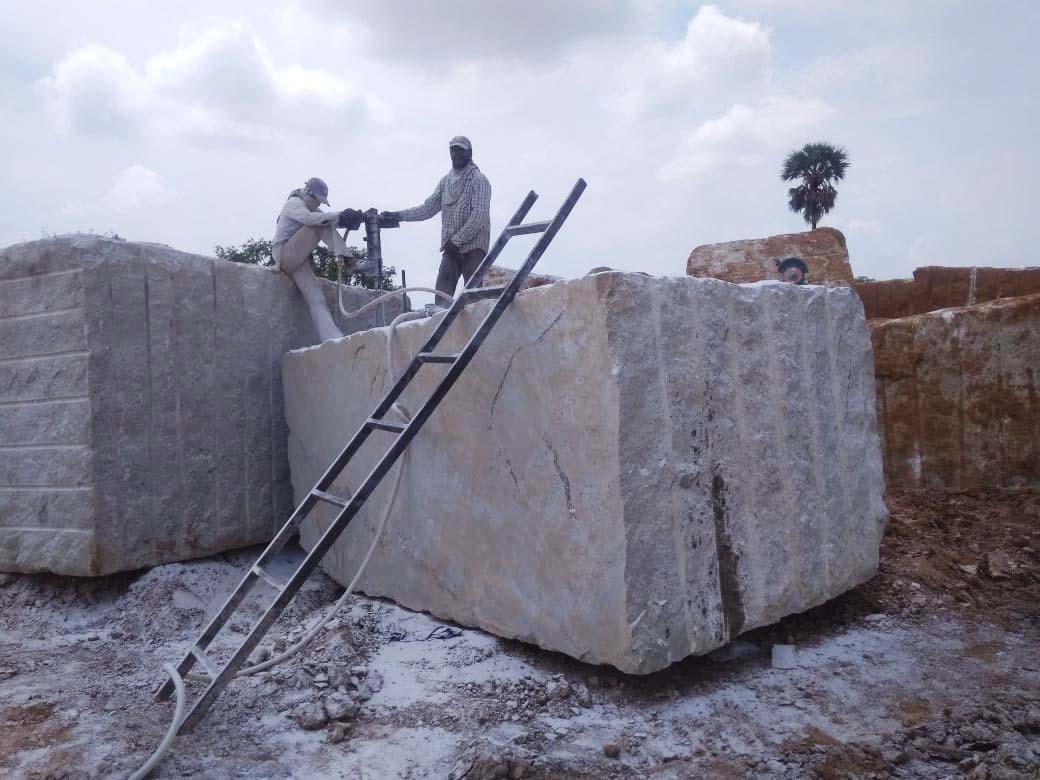Discovering the Rich History and Sustainable Practices of Granite Quarrying
As we depend on the precipice of discovering the complex tapestry of granite quarrying, a journey with time reveals not just the physical act of extracting rock however additionally the cultural and historic importance woven right into the very material of this practice. From the ancient beginnings that laid the foundation for contemporary quarrying strategies to the sustainable methods that are forming the future of this industry, each carve mark on granite surfaces tells a tale waiting to be uncovered (granite quarries in south africa). The tradition of granite quarrying extends much beyond simple removal; it is a testimony to human ingenuity, durability, and the long-lasting attraction of this stunning rock
Old Origins of Granite Quarrying
Dating back to ancient people, the technique of quarrying granite has been an important component of human background and building advancement. The earliest evidence of granite quarrying go back to ancient Egypt, where enormous pyramids and detailed sculptures were crafted from this sturdy rock. The Egyptians made use of primitive devices to remove granite blocks from quarries, showcasing the importance of this material in their monumental buildings.
Moving on in background, the Greeks likewise made considerable payments to the quarrying of granite. The Greeks utilized granite in different architectural marvels, such as temples and statues, demonstrating their skill in shaping and sculpting this durable rock. The Romans further fine-tuned the strategies of quarrying granite, employing sophisticated devices like chisels and hammers to extract and form granite for their legendary frameworks.
With the centuries, the method of quarrying granite has developed, with contemporary technologies boosting performance while preserving the ageless appeal of this natural rock - granite quarries in south africa. From old worlds to contemporary builders, the heritage of granite quarrying remains to shape our world
Development of Quarrying Techniques
The advancement of quarrying strategies has been marked by a continual progression towards better effectiveness and precision in removing granite. From the fundamental techniques employed by our forefathers to the sophisticated modern technologies used in modern quarrying procedures, the industry has actually undergone substantial improvements. Early quarrying techniques entailed manual labor with standard tools such as knives, hammers, and wedges to extract granite blocks from the planet. As civilizations proceeded, techniques like fire-setting and primitive dynamites were introduced to assist in the removal process.
In even more recent times, the advent of machinery reinvented the quarrying sector, enabling quicker removal prices and increased efficiency. Technologies such as ruby cord saws, high-pressure water jets, and pneumatically-driven drills have become common in modern-day quarries, allowing for accurate cutting and minimized waste. In addition, advancements in computer-controlled equipment and 3D modeling have enhanced quarrying operations, causing very little ecological influence and enhanced sustainability methods. As the demand for granite continues to increase, the evolution of quarrying techniques remains integral to conference sector requires effectively and sustainably.
Cultural Value of Granite
Granite holds an extensive cultural significance throughout different civilizations as a result of its enduring presence in building masterpieces and admired monoliths. From the magnificent pyramids of Egypt to the complex makings of the Angkor Wat temple in Cambodia, granite has been a material of selection for revealing grandeur and long life in cultural heritage. In old Rome, granite columns adorned holy places and public buildings, signifying stamina and durability. The cultural value of granite prolongs past its physical characteristics; it personifies durability, stability, and eternity, making it a symbol of withstanding heritages and customs.

Sustainable Practices in Quarrying
Among the abundant history of granite quarrying and its cultural value exists a growing emphasis on sustainable methods within the market. As ecological recognition and concerns about resource exhaustion have increased around the world, the quarrying field has increasingly accepted sustainable techniques to lessen its influence on the setting and bordering areas.

In addition, reclamation and rehabilitation of quarry sites post-extraction are indispensable to lasting practices. By restoring quarried areas to a natural or valuable state, such as developing wildlife habitats or leisure spaces, quarriers can offset the environmental footprint of their operations and contribute positively to the neighborhood ecosystem.
Legacy of Granite Quarrying
With a historical backdrop steeped in craftsmanship and industrial progress, what enduring impact has granite quarrying left on the landscape of modern culture? The heritage of granite quarrying reference goes beyond plain removal methods; it has formed building marvels, urban landscapes, and cultural heritage worldwide. The durable nature of granite has actually made it a recommended selection for monoliths, buildings, and infrastructure, standing as a testament to the ability and virtuosity of quarry workers across generations.
Moreover, the financial impact of granite quarrying can not be ignored. The industry continues to give employment possibility and drive local economies in areas where granite extraction prevails. It has actually likewise spurred technical improvements in quarrying methods and equipment, bring about a lot more efficient and lasting methods.
In regards to sustainability, the heritage of granite quarrying includes initiatives to mitigate environmental influences with recovery projects and accountable source management. By balancing financial interests with environmental stewardship, the market makes every effort to guarantee that future generations can continue to profit from this enduring all-natural resource.
Final Thought
